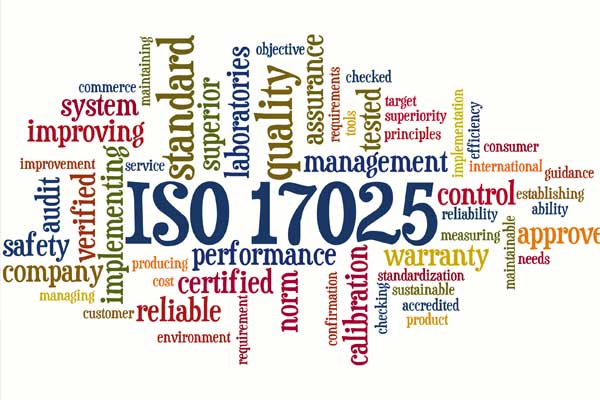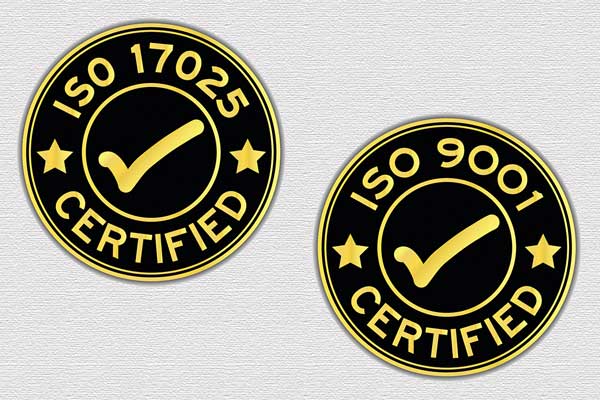If you have gone through the latest revision of ISO 17025, you may wonder how it relates to ISO 9001 and Quality Management Systems (QMS). This article will highlight the difference between ISO 9001 and ISO 17025.
What is ISO 17025:2017?
The purpose of ISO 17025 is to outline the general requirements that evaluate the competence of all testing and calibration techniques used in laboratories. This is the third edition of the standard, intended to be used as a template to assess competence, impartiality and consistency in operations. The standard is devised for laboratories of all sizes, irrespective of the number of employees and industry scope. The recommendations of the standard contain general requirements that focus on impartiality and confidentially, which are outlined in clause 4, structural requirements outlined in clause 5 and requirements for resources such as facilities, personnel, equipment or environmental conditions outlined in clause 6.

Additionally, all requirements regarding necessary processes are included in clause 7 of the standard. Examples of such requirements include:
- Reviewing tenders, contracts or requests: This section helps laboratories identify what the customer wants.
- Method suitability: This section helps laboratories select, verify, and validate the methods they intend to use.
- Sampling: This section helps laboratories perform sampling before testing and ensure proper planning and documentation are used to supplement the test.
- Handling items adequately: This section ensures that laboratories have proper procedures in place to follow for handling the testing and calibration items, going on to create customised reports.
- Record maintenance: This section helps laboratories understand which technical records they should keep and what these records should contain.
- Measurement uncertainty: This section helps laboratories put in place a process to evaluate and report upon measurement of uncertainty in calibrations.
- Result validity: This section helps ensure the results remain valid.
- Result reporting: This section includes general and specific requirements for result-reporting customers.
- Complaints: This section helps laboratories create a process to handle complaints and a plan of action to mitigate any non-conformity.
- Data and information management: This section provides recommendations to manage data and arbitrary information system so that it remains valid and accessibility is unaffected.
What is ISO 9001?
ISO 9001 is the benchmark for quality management, as it outlines recommendations to build an effective and customised quality management system. It is a flexible standard that organisations of different sectors can adopt.
Differences between ISO 9001:2015 and ISO 17025:2017
The most significant difference between the two standards is related to the applicability of the standard, where ISO 9001:2015 applies to all types of companies in different industries. In contrast, ISO 17025:2015 only applies to test and calibration laboratories.
Similarities between ISO 9001:2015 and ISO 17025:2017
Similarities between the two standards are found in clause 8, which outlines requirements regarding the management system. The ISO 17025:2017 standard states that an overall management system is needed to ensure a laboratory’s consistent and effective functioning, giving laboratories the option of addressing these requirements through an existing ISO 9001 management system or another quality standard.
This implies that if you have not implemented an ISO 9001-compliant QMS, then there are a few minimum QMS-related requirements that you would need to achieve compliance with ISO 17025:2017. Examples of these minimum requirements include:
- Documentation of management system.
- Control of documents related to the management system.
- Control of records.
- Assessment and mitigation of risks as well as opportunities.
- Procedures for continual improvement.
- Implementation of corrective actions.
- Conducting internal audits.
- Management reviews.
Those familiar with ISO 9001 would recognise that these requirements align perfectly with the standard’s recommendations. This is why many organisations implement ISO 9001 before proceeding to ISO 17025. You can contact us for information on the terms of obtaining ISO 9001 certification Australia.

How to implement ISO 9001?
The ISO 9001 contains 10 clauses, each outlining requirements for a specific domain. To build a compliant QMS, you must refer to these clauses and ensure that you have a specific process to support each recommendation. After you build your QMS, it is time to check its efficiency through an internal audit. However, a lot relies on internal audits. Therefore, it is crucial that you do not miss any important steps. ISO 9001 internal audit checklists are beneficial as they provide a practical and simplified guide for the entire process.
If you find the process of implementing an ISO-compliant management system overwhelming, you can always choose the option of hiring an ISO consultant. Consider it a strategic investment as an ISO consultant will significantly simplify the certification process due to their expertise, experience and in-depth knowledge base. Moreover, the efficiency of your management system will be amplified, as ISO consultants are adept at industry-specific best practices, thereby increasing the operational capabilities of your processes with their input.
Also read : “ISO 9001 gap analysis”
Conclusion
The difference between ISO 17025 and ISO 9001 is in the applicability, where the former only applies to laboratories, and the latter has greater applicability, fitting organisations of all sizes or sectors. The ISO certification costs depend on many variables, such as the size of your organisation and the number of employees you have. This is because the size of your organisation and the number of employees is directly reflected in the length of the audit. However, as a general rule of thumb, organisations with less than 1000 employees are usually charged around 15,000 USD annually if they have a single outlet.








Users Comments
Get a
Quote